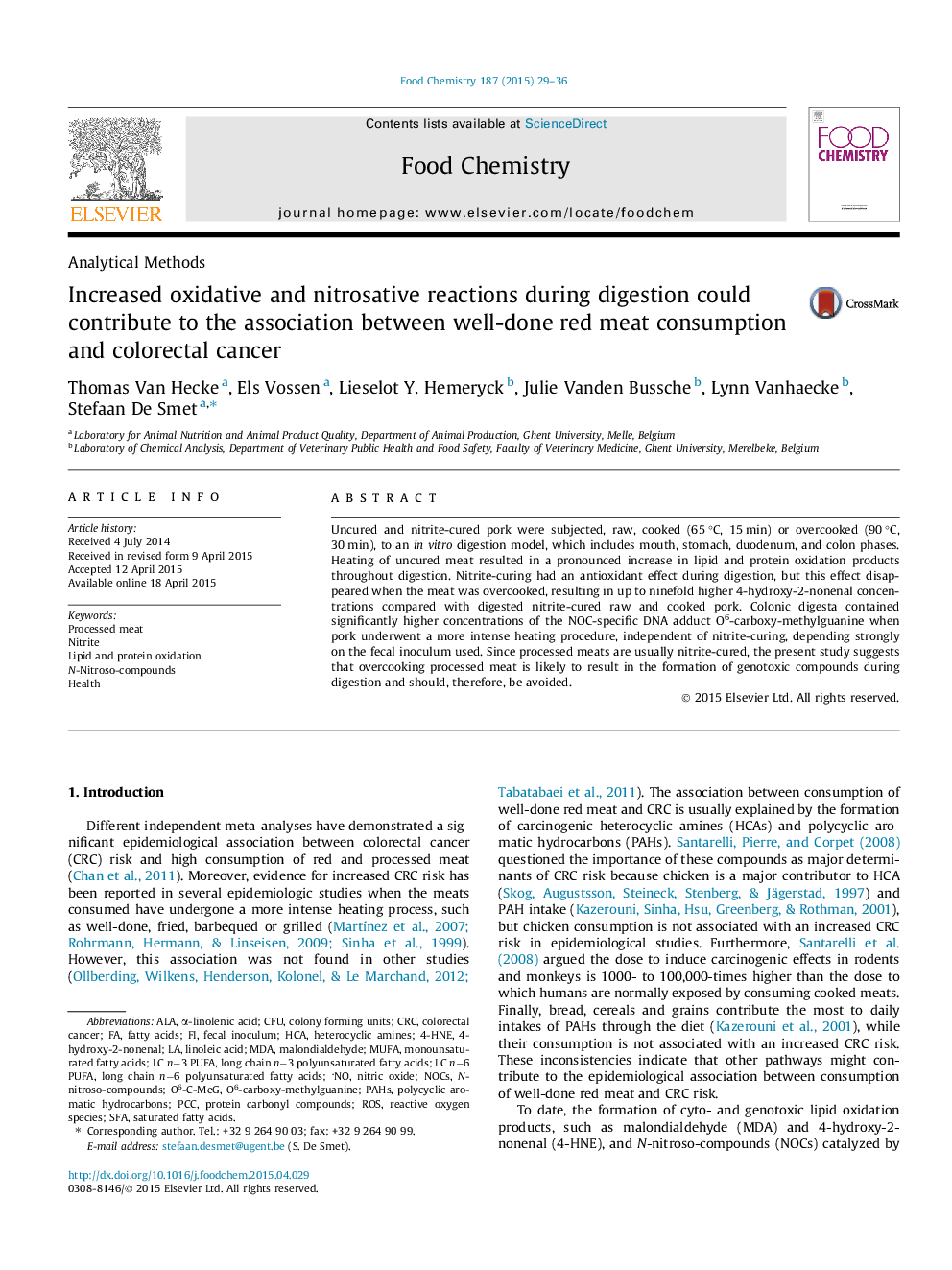| Article ID | Journal | Published Year | Pages | File Type |
|---|---|---|---|---|
| 7591558 | Food Chemistry | 2015 | 8 Pages |
Abstract
Uncured and nitrite-cured pork were subjected, raw, cooked (65 °C, 15 min) or overcooked (90 °C, 30 min), to an in vitro digestion model, which includes mouth, stomach, duodenum, and colon phases. Heating of uncured meat resulted in a pronounced increase in lipid and protein oxidation products throughout digestion. Nitrite-curing had an antioxidant effect during digestion, but this effect disappeared when the meat was overcooked, resulting in up to ninefold higher 4-hydroxy-2-nonenal concentrations compared with digested nitrite-cured raw and cooked pork. Colonic digesta contained significantly higher concentrations of the NOC-specific DNA adduct O6-carboxy-methylguanine when pork underwent a more intense heating procedure, independent of nitrite-curing, depending strongly on the fecal inoculum used. Since processed meats are usually nitrite-cured, the present study suggests that overcooking processed meat is likely to result in the formation of genotoxic compounds during digestion and should, therefore, be avoided.
Keywords
MDANOCsCFU4-HNESFAMUFAALAHCAPCC4-hydroxy-2-nonenalROSHeterocyclic aminesα-linolenic acidLinoleic acidFatty acidssaturated fatty acidsmonounsaturated fatty acidsLipid and protein oxidationColorectal cancerHealthmalondialdehydeNitriteNitric oxidePolycyclic aromatic hydrocarbonsPAHscolony forming unitsCRCProcessed meatReactive oxygen species
Related Topics
Physical Sciences and Engineering
Chemistry
Analytical Chemistry
Authors
Thomas Van Hecke, Els Vossen, Lieselot Y. Hemeryck, Julie Vanden Bussche, Lynn Vanhaecke, Stefaan De Smet,
